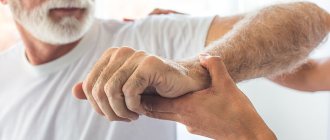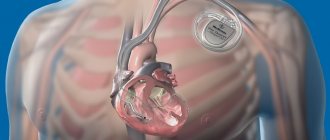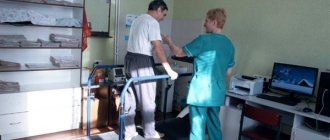A pacemaker (pacemaker) is a small device, weighing approximately 30-50 grams, capable of creating electrical impulses that regulate heart rate. It is installed when it is necessary to maintain rhythm in patients with bradycardia or atrioventricular block, when the heart works intermittently.
A pacemaker, as a rule, consists of two parts: a metal case containing a battery designed for 7-10 years of operation and a microprocessor unit that provides heart rate setting and other parameters; the second part is the electrodes, through which electrical impulses propagate from the pacemaker into the chambers of the heart. Pacemakers are the best treatment for bradyarrhythmias. The first pacemaker was implanted in 1958.
There are three types of pacemaker (this depends on the location of the electrodes):
- Single-chamber: installed in only one chamber of the heart - the right ventricle or atrium,
- Two-chamber: installed in the atrium and ventricle of the heart,
- Three-chamber: contains a device for the treatment of heart failure, installed on the right atrium and both ventricles.
ECS is also divided into temporary (an external stimulator is installed for a period of several hours to 2 weeks) and permanent (an implanted stimulator is installed).
How is the treatment carried out?
- The pacemaker is installed under local anesthesia and under X-ray control in a specially equipped operating room.
- Electrodes connected to a stimulator, which is sewn into the muscle bed in the subclavian region, are inserted into the heart through the subclavian vein.
- The most difficult part of the procedure is positioning and securing the lead tip into the atrium or ventricle to ensure good contact.
- A bed for a pacemaker is created in the subclavian region on the left or right under the skin through a small skin incision.
Limitations of life with a pacemaker - how to live after surgery?
Pacemakers have protective shields so that most objects a person uses or comes into contact with them will not affect the normal operation of the device. However, items that generate or use electricity or transmit wireless signals - such as a portable generator, electric drill or cell phone - have electromagnetic fields. Some of these fields may affect the operation of the device. If electromagnetic fields surrounding an object are too close to the pacemaker, the device will detect them and this may temporarily affect its performance.
Avoid close or prolonged contact with electrical appliances or equipment that have strong magnetic fields:
- MP3 players, cell phones. New frequencies are becoming available in radio communications. Their use by mobile phones makes pacemakers less reliable.
- Household appliances, for example, microwaves, electric drills, electric blankets, electric shavers, heating pads.
- High voltage wires.
- Metal detectors.
- Equipment for welding for industrial use.
- Electric current generators.
These items will disrupt the transmission of electrical impulses in the pacemaker. The patient will not be able to determine whether a breakdown has occurred. The risk depends on the proximity and duration of interactions with the above devices.
If a person experiences dizziness, changes in heart rate, or receives an electric shock while using any device, they should simply discontinue the interaction. Any temporary effect is unlikely to cause reprogramming or damage to the pacemaker. The device is designed to return to normal operation. If symptoms continue and there is no improvement, you should consult a doctor as soon as possible.
If the item is used for its intended purpose and is in good working order, there is no known risk when using the following items:
- Charger for household batteries.
- CD/DVD or recorder.
- Curling tongs.
- Dishwasher.
- Electric blanket.
- Electric guitar.
- Electric scales.
- Hair straightener.
- Jacuzzi.
- Ionizing air filter.
- Kitchen appliances (blender, bottle opener, refrigerator, stove, toaster).
- Massage chair.
- Microwave.
- Remote control.
- TV.
- Battery powered flashlight.
- Soldering iron.
- Laser pointer.
- Calculator.
- Copy machine.
- Laptop, desktop PC.
- Digital music player (iPod).
- Fax machine.
- Barcode Scanner.
- A printer.
- Radio AM/FM
- Scanner.
Minimal risk
The following items should be kept at least 16 centimeters from the pacemaker:
- Electric portable kitchen appliances (mixer or knife).
- Remote control, antenna.
- Electric razor.
- An electric toothbrush.
- Magnetic exercise bike.
- Hand hairdryer.
- Massager.
- Sewing machine.
- Treadmill.
- Vacuum cleaner.
- A circular saw.
- Electrically driven battery.
- Electric chainsaw.
- Manual meat grinders.
- Electric lawnmower.
- Cordless screwdriver.
- Router.
- Soldering iron.
- Ham Radio - 3 watts or less from antenna.
- Cell phone – 3 watts or less from antenna.
- Wireless communication devices (computers, headsets, modems, routers, smartphones, Bluetooth™)
- Wireless controllers (game consoles, Xbox™*, Playstation™, Nintendo™)
You must maintain a distance of at least 31 cm between the following items.
- Car/motorcycle – elements of the ignition system.
- Electric fence.
- Transformer.
- Induction hob.
- Boat motors.
- Car battery.
- Components of the ignition system of gasoline-powered tools (lawn mower, snow blower, lawn mower, chainsaw).
You must maintain a distance of at least 61 cm between the following objects and the pacemaker.
- Connecting cables.
- Welding equipment with current up to 160 amperes. It is not recommended to interact with welding equipment with a current exceeding 160 amperes.
Do not get closer than two meters to welding machines and generators.
Experts do not recommend carrying phones or iPods in your shirt over a pacemaker. The phone can be held by the ear, the MP3 player in the hand, away from the pacemaker.
Medical procedures can also affect the pacemaker's performance, including:
- MRI, which uses a powerful magnet to create images of internal organs. Metal objects are attracted to the magnet and should not be used near the MRI. The magnet may interrupt stimulation and slow down the device. If an examination needs to be carried out, some models can be reprogrammed. You should discuss the possible risks and benefits with your doctor before the scan.
- Extracorporeal shock wave lithotripsy (ESWL) is a non-invasive procedure that uses shock waves to break up kidney stones. This method is safe for most pacemaker patients if reprogramming is possible. Close monitoring will be necessary after lithotripsy and for several months to ensure that the device is working properly. Patients with certain types of pacemakers implanted in the abdomen should avoid this procedure. Each specific case is discussed with a doctor before and after treatment.
- Transcutaneous electrical nerve stimulation is used to relieve acute or chronic pain. Several electrodes are placed on the skin and connected to a pulse generator. Most studies have shown that this procedure rarely inhibits bipolar electrical stimulation. Occasionally, it may inhibit monopolar pacing for a short period of time. This can be resolved by reprogramming the pulse generator.
- Diagnostic radiation (such as X-rays) does not appear to have any effect on the pacemaker pulse generators. However, therapeutic radiation (eg used to treat cancer) may damage the device. The extent of damage is unpredictable and may vary depending on the equipment system. But the risk is significant and increases as the radiation dose increases. It is recommended to protect the pacemaker as much as possible and move it if it is in the immediate radiation zone. During such treatment, it is necessary to undergo regular electrocardiograms to monitor the condition of the heart. Also check the pulse generator between and after procedures.
- Electrocautery used to stop bleeding during surgery.
- Dental equipment does not adversely affect pacemakers. However, some patients may feel an increase in stimulation while the drill is in use.
- Shortwave or microwave diathermy uses high intensity signals. They can bypass the pacemaker's protection, interfere with operation, or permanently damage the pulse generator.
Treatments that require some precautions. You should inform your doctor that the device is implanted:
- Ablation.
- Acupuncture.
- Argon plasma ablation.
- A means for stimulating bone tissue growth.
- Colonoscopy – removal of polyps.
- Axial computed tomography.
- Electroconvulsive therapy.
- Electrodialysis.
- Electrosurgery and other procedures that use an electrical probe to control bleeding.
- Electromyography.
- External defibrillation.
- Hyperbaric oxygenation.
- Magnetic therapy.
- Lithotripsy.
- Interference current therapy.
- Microcurrent therapy.
- Mechanical ventilation.
- Electronic muscle stimulators.
- Neutron radiation.
- Radiation therapy (external x-ray, radiosurgery).
- Stereotactic surgery.
- Transcranial magnetic stimulation
- Transcutaneous nerve stimulation.
- Transurethral needle ablation.
- Transurethral resection of the prostate
- Virtual colonoscopy with CT.
It is necessary to notify healthcare professionals with whom the patient interacts that there is a pacemaker, including dentists and medical technicians. Equipment used by doctors and dentists can affect pacemaker performance. The presence of this device is also indicated by special cards, bracelets and neck jewelry.
Exercise stress
In most cases, a pacemaker does not interfere with sports or any physical activity (for example, bowling, golf, playing tennis, fishing, etc.). Contact sports such as martial arts, wrestling, boxing, football, etc. should be avoided. Because they can damage the device or dislodge the wires in the heart.
Further care
Your doctor will check your pacemaker approximately every three months. Unfortunately, over time, devices stop functioning properly:
- Wires move or break.
- The battery becomes unusable.
- The disease is progressing.
- Other equipment interferes with the transmission of electrical signals.
You will need to visit your doctor several times a year to check that your pacemaker is working. Certain functions can be explored remotely using a phone or the Internet.
An electrocardiogram is performed to detect changes in the electrical activity of the heart.
Pacemaker replacement - service life
Battery life ranges from 5 to 15 years (average 6-7 years), depending on how actively the device is used. The doctor will replace the alternator along with the battery before the battery begins to discharge. Replacing them is a less difficult operation than the original one. They can also change the wires of the device. The doctor will notify you at subsequent visits if any components need to be changed.
Removing such systems is a potentially high-risk procedure. The most common cause is infection. If any part of the system becomes infected, it is usually impossible to cure the infection without completely removing all equipment from the body. Doctors disconnect the pulse generator from the chest wall and remove all the wires from the veins and heart. Another reason is wire breakage or insulation failure.
Specialty societies have developed guidelines for the safe removal or removal of the device. They contain instructions for removal, information on the qualifications and training of the attending physician, methods and tools used. Israeli cardiac surgeons perform pacemaker replacement and removal operations in accordance with international standards.
Possible complications
The risks of the procedure are generally around 1%, including bleeding, pneumothorax (air entering the pleural space), cardiac perforation, risk of suppuration and device malfunction.
Possible complications include displacement and disruption of electrode insulation, pacemaker syndrome (dizziness and shortness of breath when the pacemaker is not working properly) and infectious complications.
In fact, such complications are very rare and are not comparable to the benefits of a pacemaker installed according to indications.
Pacemaker and electromagnetic devices
There are also some restrictions associated with the possible exposure of the device to magnetic and electromagnetic fields. Currently, all devices have fairly reliable protection from electromagnetic fields, and the use of devices and technology that surrounds us in everyday life does not require any special restrictions. This applies to computers, microwave ovens, and mobile phones. It is not recommended to carry a mobile phone in your breast pocket.
However, this or that powerful impact may disrupt the operation of the implanted device or cause harm to the patient.
Indications and age-related contraindications: who needs the device and why?
Absolute include :
- sustained bradycardia with characteristic clinical signs;
- documented decrease in heart rate < 40 beats/min. during physical work;
- episodes of absence of rhythm (asystole) on the ECG lasting more than three seconds;
- combination of sustained AV block of II-III degree with delays in impulse conduction along two or three His bundles in patients with post-infarction cardiosclerosis;
- any types of bradyarrhythmias that may threaten the health or life of the patient (if the heart rate is less than 60 beats/min.);
- paroxysms of ventricular arrhythmias (tachycardia, fibrillation, asystole).
Relative readings:
- AV blockade of II-III degrees without changing the patient’s condition;
- loss of consciousness in patients with blockades without connection with ventricular tachycardia with an unknown cause of arrhythmia;
- severe circulatory failure with asynchronous ventricular function (with atrial fibrillation, myocardial infarction).
There are no age-related contraindications to installing a pacemaker. The only limitation is that the operation is not justified.
Will a pacemaker allow a person to die?
Firstly, a pacemaker will not save a person from death. This is absolutely true. When a person dies, his heart stops. At the same time, irreversible biochemical processes occur in all tissues of the body. Irreversible because they cannot be reversed. Thus, a situation cannot occur where a pacemaker prevents a person from dying. However, after death the pacemaker will not stop working. After all, the main purpose of a pacemaker is to stimulate the heart when there are pauses in its work. But the thing is that after death and after all the changes in the tissues that occurred after death, the heart muscle will no longer be able to respond with contraction to the electrical stimulus sent by the pacemaker. That is, the pacemaker will continue to work as it worked, but its electrical stimuli that move the living heart will not lead to contraction of the heart muscle.
Recovery after implantation
Rehabilitation after installation of a pacemaker takes from several weeks to eight months. The duration of the period depends on age, state of health and psychological mood.
In the clinic
Immediately after the procedure is completed, the patient is placed on ice at the incision site, then transferred to intensive care, where he remains for several hours. At this time, doctors monitor your well-being and also begin administering antibiotics. You need to lie still on your back. After readings and x-rays are taken, the patient is placed in a general ward. After a few hours he can go to the toilet.
It is not recommended to get up and walk for 24 hours after surgery due to possible weakness and fainting . For pain at the surgical site, painkillers with a sedative component are administered. The hand on the side where the device is implanted must remain motionless for three days.
On the second day you can walk, lie not only on your back. Nurses continue to administer painkiller injections. In the morning, blood and urine are taken for analysis. The cardiologist checks the operation of the IVR.
On the third day, the first dressing is done, and the nurse administers painkillers for the last time. If the patient has enough strength, he is allowed to go up and down the stairs. You can take a shower. Parts of the body that are inaccessible to water (chest and arm) will have to be wiped with wet wipes.
All subsequent days before discharge, it is recommended to lead a normal lifestyle: walk along the corridors of the hospital, climb to the desired floor without the help of an elevator.
- Indications for installation of a cardiac pacemaker and possible contraindications
On the eighth day, the bandage and stitches are removed. If the wound at the incision site has not festered and no other complications have arisen, discharge occurs on the ninth or tenth day after the operation. Material is collected for analysis, an ECG is recorded, and an ultrasound is performed. An EX passport is issued, which contains all the information about the device and its service life before replacement (6-9 years).
Before discharge
On the eighth or ninth day, the bandage is removed, and then the stitches. The scar cannot be wetted for another 3-4 days (until the last black “dots” fall off - for me this happened only after a week, but I started swimming earlier, trying not to get the scar wet).
You may need to take additional or repeat tests, and be sure to do an ultrasound and ECG (to assess the functioning of the heart with a pacemaker). But you don’t have to think about it here – the medical staff will tell you everything.
There may be problems with the healing of the suture, or discharge may appear - then antibiotics are injected or other therapy is prescribed. But, as a rule, on the 10th day - discharge. And the end of the postoperative period after surgery to install a pacemaker...
Sports and diet for people with ECS
Despite the many restrictions, they are quite easy to comply with, because, in general, they do not greatly affect the quality of life. As for sports, everything is simpler. You can’t just engage in contact sports that involve falls, collisions or blows, for example, football, wrestling, boxing. Also, you should not swing your arms, so swimming freestyle, butterfly, playing tennis, golf is no longer necessary.
It is worth noting that amplitude movements of the hands are unlikely to damage the pacemaker, but they can cause significant pain and also injure the tissues surrounding the device. Focus primarily on your well-being and, if anxiety or pain arises, immediately take a break. As for other sports, you can do anything for which there are no health contraindications.
Having a pacemaker does not impose any restrictions on food. However, remember that you should not consume foods that have a negative effect on your heart, because it is not new to you, and it still needs to be taken care of. Exercise and eat moderately, then you will not have any problems.
Sixth and subsequent days
That day I installed the wonderful Pedometer program (it’s available for Android) and walked with it more than 10,000 steps (about 6.7 km) - although I didn’t install it in the morning, so the real distance was greater. Again, I did not experience any discomfort at that moment. On the same day, I started climbing stairs for the first time with a small load - a 1.5-liter bottle of water.
Before this, I only went up “loaded” in the elevator. He carried the bottle, of course, in his right hand – the opposite “sick” hand. It was quite risky (as it seemed to me at that time), because... With a conditionally sore hand, I would not dare to lean on the railing.
Subsequently, the load only grew - by the time I was discharged, I had already walked almost 20 thousand steps (about 13.5 km), of which at least 800 were climbing stairs. On the sixth day, I put the T-shirt over my head painlessly and swam freely in the shower (however, without allowing moisture to get on the bandage).
Changes in the postoperative scar during the rehabilitation period.
Most often, within 3 months after surgery, a mature scar forms in the incision area. Thus, during this period, complete healing of the wound occurs. Connective tissue develops in the wound; the top of the wound is covered with epithelium - this is the surface layer of the skin. It should be noted that during the rehabilitation period the scar may expand and increase in size. This is acceptable and usually does not require any therapeutic measures. However, if the scar protrudes significantly above the surface of the skin and has a dense structure, then it is a keloid scar. In this case, it is possible to use special ointments that prevent the formation of scar tissue. The postoperative wound may experience a tingling sensation, especially in the first months. As a rule, it goes away on its own after a few months. And of course, if there is severe pain, redness of the scar, and fluid is released, then you should urgently see a doctor. The best thing, of course, is the surgeon who performed the operation.
The following medical procedures and studies are allowed to be carried out with caution:
- 1. Computed tomography.
- 2. MRI: In the case of an MRI-compatible device, you must program the device in MRI mode.
- 3. Ultrasound examinations.
- 4. Defibrillation and electrical cardioversion.
- 5. Lithotripsy.
- 6. Radiofrequency treatment methods.
- 7. Transcutaneous electrical neurostimulation.
- 8. Electrolysis.
You should also behave with caution when going through security at the airport.
It is recommended to have a document confirming the implantation of the device with you (the card of the owner of the implanted device or a copy of the discharge certificate) and present it to airport employees for personal inspection so as not to go through the control facility. However, it is possible to pass through the “frame”, the device will not be damaged, however, if dizziness or interruptions in heart function occur, you must immediately leave the area affected by the control device. Dental interventions and radiographic examinations are permitted without any restrictions.
The patient should be observed by a specialist who will check (program) the implanted device using special programming equipment 1-2 times a year. If any symptoms appear (dizziness, lightheadedness, fainting), you should immediately contact a specialist who is monitoring the patient.
Prohibited:
- 1. Be exposed to strong microwave fields, magnetic and electromagnetic fields, or electric current (for example, when using high voltage equipment, magnets used in industrial areas, radar or other sources of electromagnetic interference).
- 2. Perform magnetic resonance imaging (MRI) in cases where the implantable device is not MRI-compatible.
- 3. Use physiotherapy methods associated with magnetotherapy and electrical influence.
- 4. Use monopolar electrocoagulation during surgical interventions, in cases where the operation of the endocardial electrode is programmed in monopolar mode
- 5. When conducting ultrasound examinations, direct the beam directly to the body of the implanted device.
- 6. Carry out diathermy (treatment using high-frequency currents, short-wave exposure, exposure to microwave currents).











